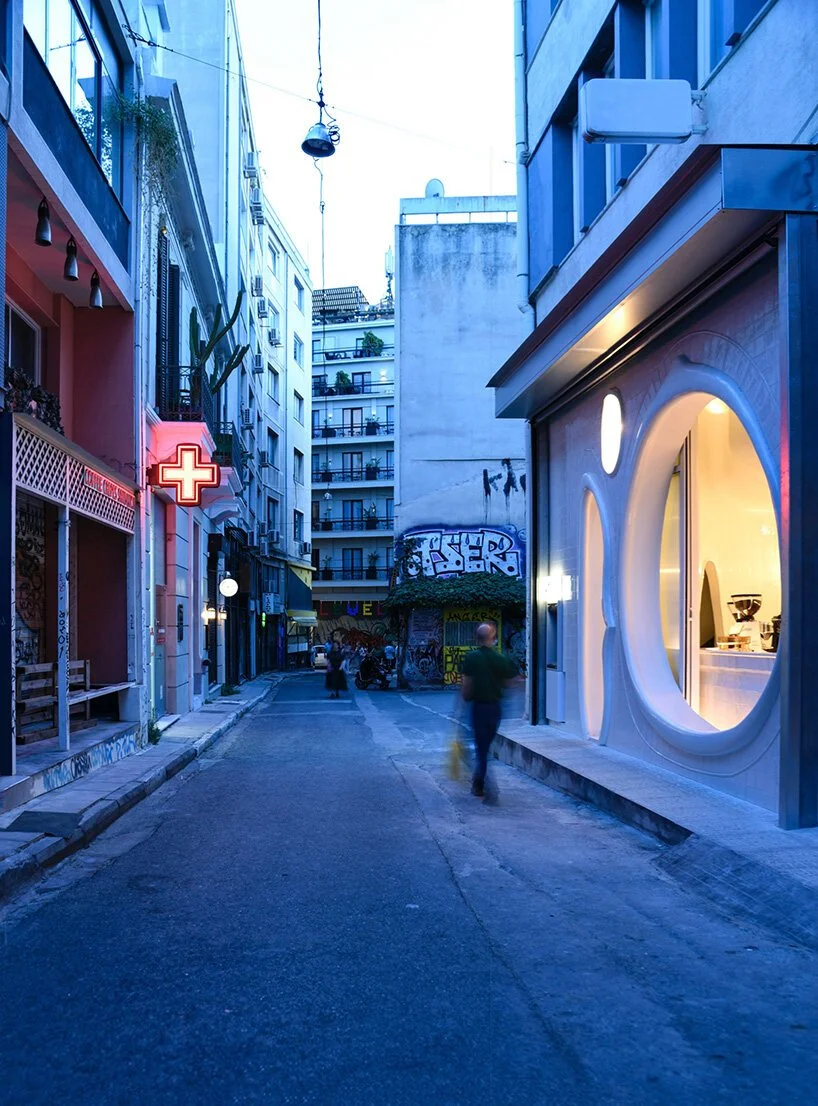MONTH IN REVIEW: July 2025
A roundup of this past month’s art and design news about the makers and creators from Greece and Cyprus
Ancient Monuments in Limassol Damaged during Cyprus Wildfires
The Department of Antiquities announced that several ancient monuments were damaged by the recent wildfires that raged through Limassol this month. Among the affected monuments are the watermill in the Kissousa area of Kapsalia, the medieval bridge in the Eliomilos area of Potamiou, and the ruins from the early Christian period in Chiliantris, located in Souni-Zanakia. These sites will be fully evaluated once conditions allow. Other damaged sites include the ruins of the Ayios Stylianos church, a Byzantine building complex in Aspri Moutti, the ruins of the Ayios Sialloumi church, and two additional church ruins. 62 other areas are currently under inspection.
If interested in providing aid to those affected by this disaster in the form of personal products and food, you can view the drop off spots here.
Minoan palace centers in Crete added to UNESCO World Heritage list
UNESCO added six palace centers in Crete to its World Heritage List. Inducted into the list during the World Heritage Committee’s 47th session this month, the sites are now recognized as having outstanding universal value and that their protection and preservation are of concern for all of humanity.
The palace centers were key locations during the Bronze Age dating from from 1900 to 1100 BCE including Knossos, Phaistos, Malia, Zakros, Zominthos and Kydonia. They served as administrative, economic, and religious hubs, featuring advanced architecture, urban planning, and frescoes. They reveal early writing systems, maritime networks, and cultural exchanges. The properties highlight the complexity of the Minoans’ social structure and their enduring influence on Mediterranean history (UNESCO).
Greece’s Culture Ministry shared that the listing followed a multi-year nomination process.
Image copyright: © Ministry of Culture
A New Members club – House of NYNN — opened at The Ilisian in Greece
Member-only clubs have sprouted across Athens and its suburbs the last few years as a result of the city’s growing global influence in art and culture and as the “it” holiday destination. House of NYNN just opened at The Ilisian, a multifaceted city destination in Athens, joining the likes of Tatoi Club, House of Shila, Anthos Collective, and 91 Athens Riviera.
House of NYNN is divided into four distinct spaces designed to support how people gather, work, move, and recharge. The Living Room is the heart of the Club, the Forum blends co-working and meeting areas into a flexible environment for collaboration, the Wellness Floor offers fitness and holistic services, and the Oasis is a lush, open-air sanctuary with a pool.
The Ilisian reimagines the historic Hilton Athens into a new urban landmark complete with luxury hotels, residential units, restaurants, retail, and wellness experiences.
New Athens gallery Melas Martinos by Local Local opened in Athens
Located in Athen’s Monastiraki neighborhood, Melas Martinos is a new contemporary art gallery that blends its historic architecture with contemporary art. Architecture firm Local Local re-imagined the existing 19th-century building, which was once an antique shop owned by the client’s family for over a century. Numerous features were integrated into the building over the centuries such as the series of arches on the first floor designed by Greek modernist architect Takis Zenetos.
The original shop had three floors of storage with secondary spaces upstairs that were inaccessible to the public. Local Local updated the interiors with a light hand and gently sharpened its historical features to ensure it was compatible to host contemporary art shows while also offering space for antiques and furniture to be displayed. It reworked the entire top floor into a terrace with a red terrazzo floor that overlooks the ancient surroundings. The red finish references the traditional tiled roofs of the neighborhood.
Ron Nagle: Ode to a Grecian Formula is currently on view at Melas Martinos until August 30.
EMST Athens Presented its Octopus Summer Issue Edited by Curator Filipa Ramos
EMST’s newest exhibition — Why Look at Animals? A Case for the Rights of Non-Human Lives — inspired by John Berger’s seminal essay of the same name, “Why Look at Animals?” (1980), which explores the changing relationship between humans and animals, particularly in the context of modernity. The essay reflects on how animals, once deeply integrated into human life, have become increasingly distanced, objectified and commodified. The exhibition centers on animal rights and animal well-being, highlighting the urgent need to recognize and defend the lives of non-human animals in an anthropocentric world that exploits, oppresses and brutalities them.
The museum expands this dialogue through the second issue of Octopus, its biannual online journal of contemporary art history and theory, cultural theory and criticism. Guest edited by curator Filipa Ramos, Issue #2 explores the human-animal relationships and includes contributions from a wide range of disciplines and spans topics from ecofeminism to food politics, and from post-humanism to cinema. It includes essays, stories, poems, specially commissioned illustrations, and even recipes for shared human and animal banquets, prioritizing underrepresented voices in animal studies, fostering dialogue across disciplines and perspectives.
EteroLukumas – a tiny dessert shop by 314 Architecture – opened in Athens
EteroLukumas is a new dessert shop in the Psyrri neighborhood of Athens. Just 215 square feet, this small shop is a structural gem devised by 314 Architecture. The bakery serves loukoumades and ice cream behind a ceramic-tile facade that is inspired by those found in many Athenian homes from the 1950s and 1960s. Devoid of harsh corners, curves dominate the interior and exterior to create a fluid experience for visitors that feel as if they’ve entered into a cave. The windows are formed in whimsical shapes and invite people in without unveiling what’s inside. The project’s fluid and sculptural approach offers a counterpoint to the city’s usual intensity and strong, concrete facades.
















